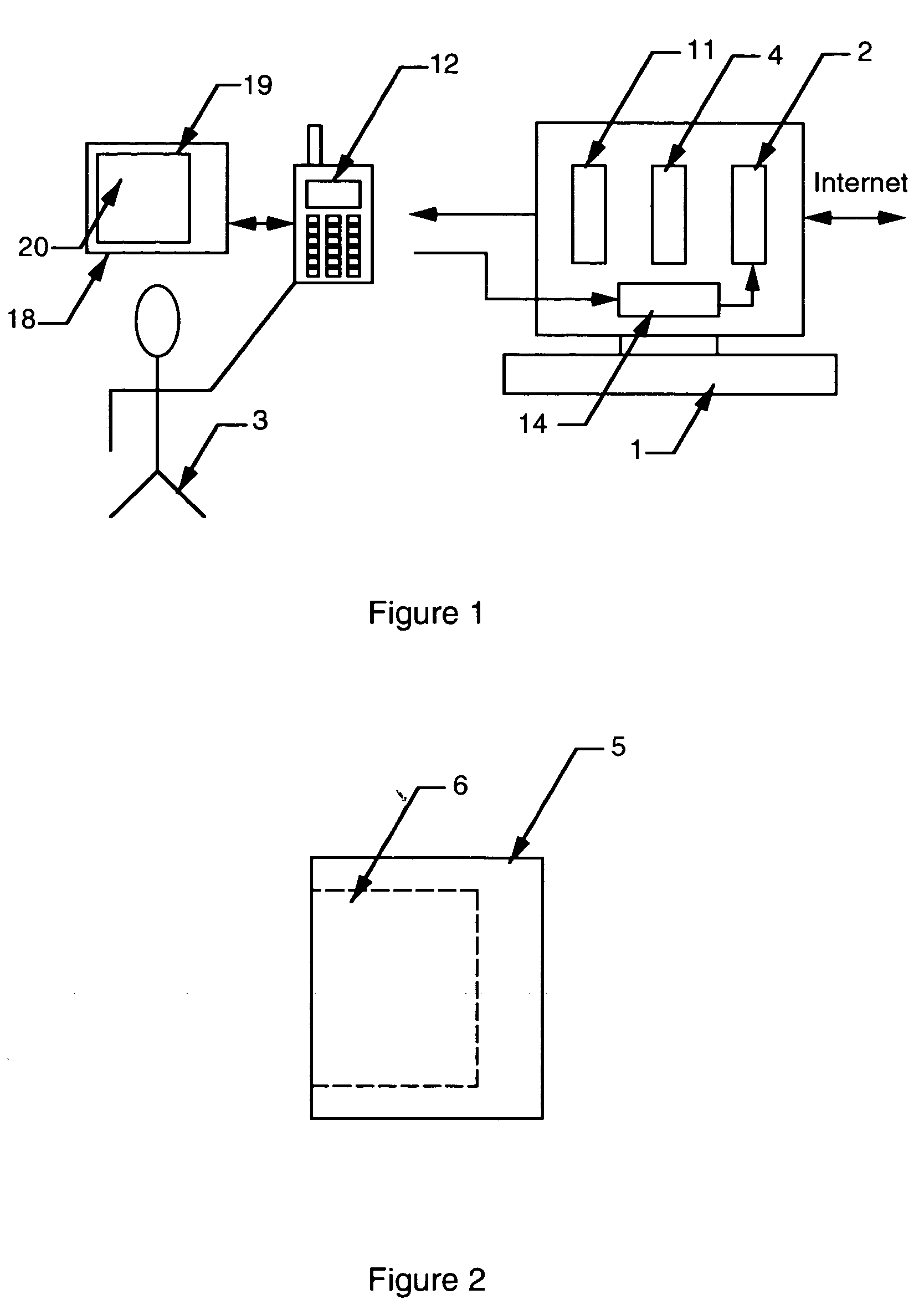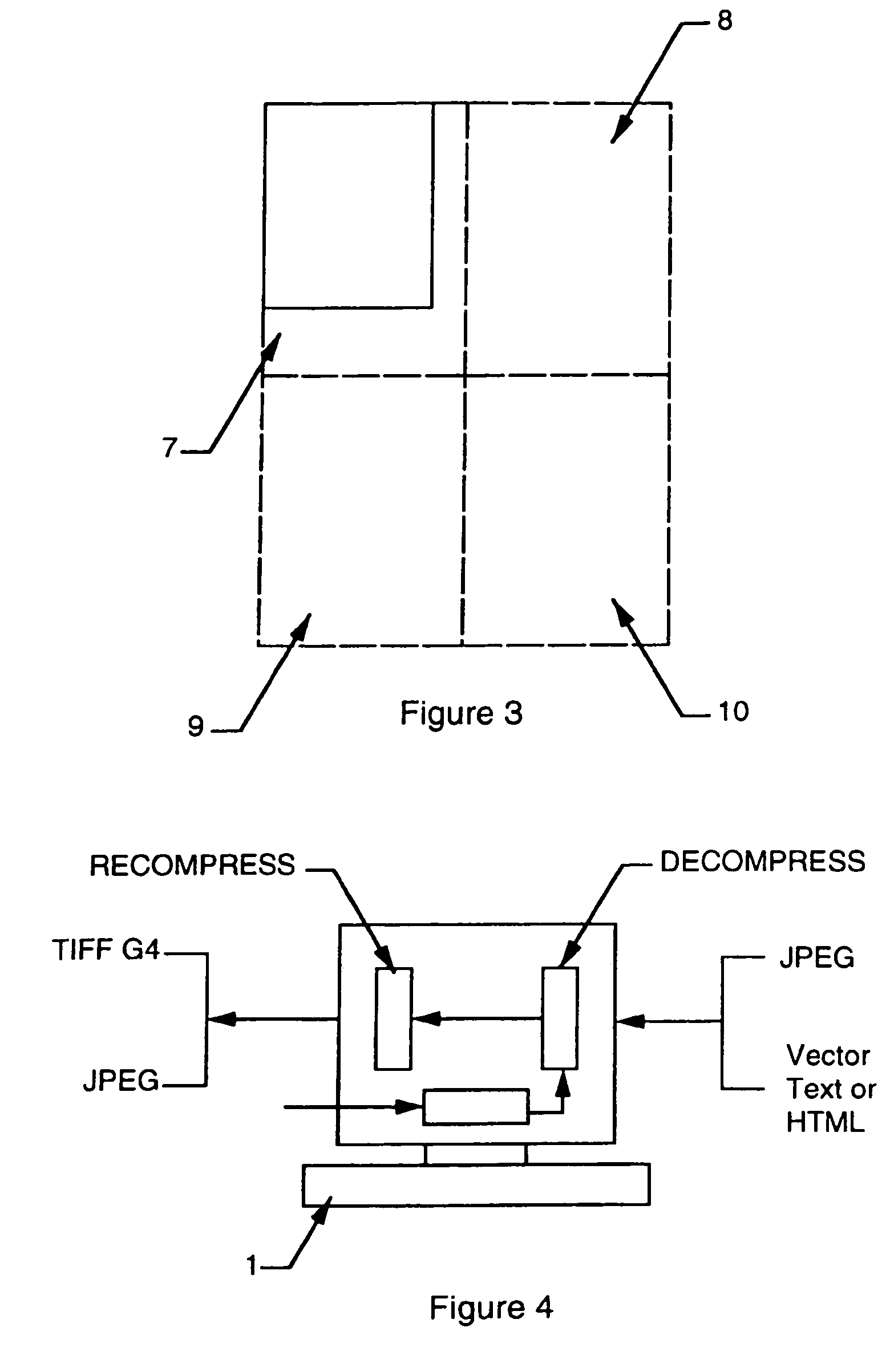Portable high speed communication device
a high-speed communication and portable technology, applied in the field of host computer systems, can solve the problems of much slower computer access to the internet and world wide web, and achieve the effect of degrading image quality
- Summary
- Abstract
- Description
- Claims
- Application Information
AI Technical Summary
Benefits of technology
Problems solved by technology
Method used
Image
Examples
Embodiment Construction
[0029]To facilitate description, any numeral identifying an element in one figure will represent the same element in any other figure.
[0030]The principal embodiment of the present invention aims to provide a device that allows a user to access the Internet or the World Wide Web (WWW), which is a device similar to a palm top computer. It is a further aim of the present invention, to offer a cost-competitive device. It is a further aim of the present invention, to increase the speed of refreshing the screen when the user clicks on a link and commands another page to be displayed.
[0031]Currently, existing palm top devices such as the Palm Pilot VII and Windows CE type devices contain an operating system, and within the operating system a mini-browser to interpret information received from the WWW or Internet and then display this information on the screen. This requires a powerful microprocessor, which is not advantageous in conserving power for portable applications and also minimizin...
PUM
 Login to View More
Login to View More Abstract
Description
Claims
Application Information
 Login to View More
Login to View More - R&D
- Intellectual Property
- Life Sciences
- Materials
- Tech Scout
- Unparalleled Data Quality
- Higher Quality Content
- 60% Fewer Hallucinations
Browse by: Latest US Patents, China's latest patents, Technical Efficacy Thesaurus, Application Domain, Technology Topic, Popular Technical Reports.
© 2025 PatSnap. All rights reserved.Legal|Privacy policy|Modern Slavery Act Transparency Statement|Sitemap|About US| Contact US: help@patsnap.com



